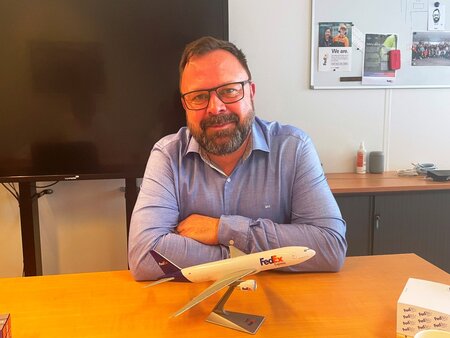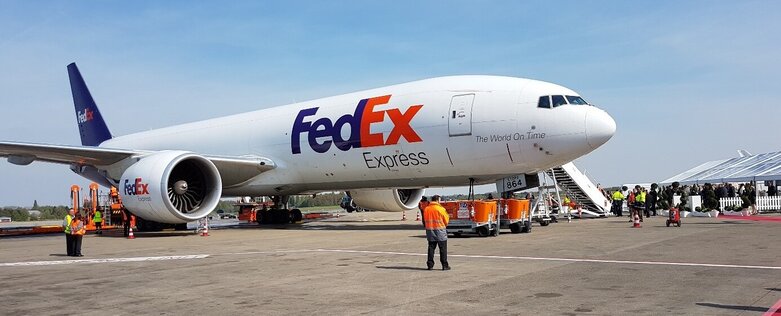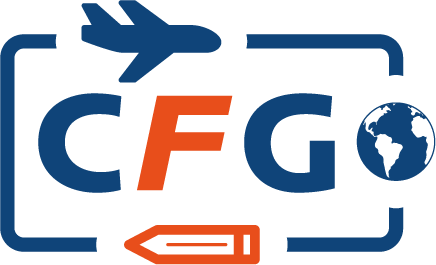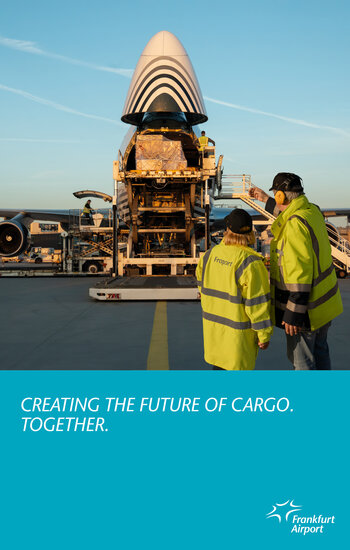The take-over of TNT in 2016, brought FedEx a second European hub at Liège Airport (LGG). Over the years, the airport has acquired a role of its own, especially after the introduction of the ‘tricolor’ strategy, says Managing Director Hub Operations, Rudi Loontiens (RL), in an exclusive interview with CargoForwarder Global (CFG).

FedEx effectively landed in LGG in 2017. The honeymoon was soon distorted by a cyber-attack aimed at TNT, recalls Mr. Loontiens, who joined TNT in 2015, as a Project Manager. “Due to this attack, all TNT systems were out for several months, and we were compelled to speed up bringing in the FedEx systems.”
CFG: Has this process been completed?
RL: The crux of the matter is to have the two systems talk to one another, which is completed.The physical integration of our customers onto the FedEx platform has not been 100% completed yet. It is part of a large exercise that is going on. We have clients who still work with the TNT shipping system. IT-wise there is no new development on the TNT level.
CFG: Then in 2021, the European organization was copy-pasted from the US: one main hub, Paris-CDG, and a secondary hub, Liège Airport. Is there an allocation of functions between them?
RL: Liège Airport was the European hub for TNT, and CDG was the European hub for FedEx. Both served the same airports in and outside of Europe, with different aircraft. You will understand that this is not an efficient way of working.
We were weighing different options. Do we need 2 hubs in Europe? How big should each one be? In LGG, in the north of the airport, we had opportunities for growth, that were lacking at CDG. But then came Alibaba, which took a great part of the available land, so we had to abandon our plans for a mega hub. So, Plan B: primary hub, secondary hub.
At a certain moment, in 2021, we downgraded LGG and optimized CDG. At that moment, we worked 24/7. We went from 2,000 staff down to 1,300, approximately.
We ceased our weekend and daytime activities, in which mainly economy products were sorted. The number of flights were reduced from 35 to 15, and night operations were cancelled. From handling 100,000 pieces per 24 hours, we went to 35,000. It was a rather far-reaching restructuring operation. But we kept a fixed pool of workers.
CFG: But before that, in 2020, came Covid, which brought another challenge.
RL: The challenge was not so much in the number of pieces, but in the logistics landscape as a whole. Under normal circumstances, we used to put our low-yield products as belly on passenger planes, but these were annulled overnight. So, we had to put all flows on cargo and express planes. Customers moved from an economy to a more high-yield express product. A lot was shipped by ocean freight, too.
From Asia and intra-Europe, we experienced huge growth and a maximization of the flights. In the U.S., we flew a lot of vaccines and medical equipment. As we were able to sell more profitable products, this was very good business for FedEx on the financial side. From the operational point of view, however, it was a very difficult period. There was a lot of fear with our staff, and we had to adjust our processes.
Flying the colors
CFG: So, what connections does FedEx offer ex LGG?
RL: In the beginning, we served the larger part of the European Blue Banana market by air, and Cologne and CDG by road, with 5 weekly Memphis flights as our only intercontinental route. Instead of expanding the hubs, our legendary Founder and Chairman, the late Fred Smith, suggested letting the business grow by making better use of our network and our assets. One of the things was to stop putting miscellaneous products on one single plane.

That’s when our ‘tricolor’ strategy was born, reflecting the three colors of our brand. ‘Purple’ stands for time-critical express, called ‘International Priority’ or ‘IP’. This is forwarded mainly on the route CDG-Memphis.
‘Orange’ stands for freight over 68 kg, an express product as well that requires specific handling, flown intercontinentally, mainly from LGG. ‘White’ is for non-time-critical consignments, flown point to point, avoiding re-sorting and the like. For these we use belly capacity.
This system creates space and is in line with the needs of our clients and our products.
Our daily Memphis flight has been converted to Orange. Since FEB24, we fly daily from Liège to Indianapolis. Since SEP24, three times a week to Oakland – a unique connection for Europe. And last April, we added an extra Memphis flight.
This has brought Liège Airport a new function as an intercontinental gateway for Europe, besides CDG as the universal express hub for Europe. Apart from this, Liège Airport has kept its role as a hub for intra-European services.
CFG: How many intra-European flights do you operate and where to?
RL: 15 or so, to all the large sales markets. The flights are operated on a fixed schedule that we revise if necessary. LGG and CDG operate as communicating vessels. Everything within a 5-hour driving time ends up in LGG. To enable our clients to catch the first flight out of CDG, they can deliver the night before at LGG.
CFG: Some years back there was a dispute with the Belgian Cockpit Association that accused FedEx of flying European routes with its own aircraft, thus violating the EU-AS Aviation Agreement. Has that matter been settled?
RL: ASL operates all our European traffic, but not exclusively. Our own B777s may, however, be used to fly ‘extended legs’ such as from LGG to Dubai and service a second leg taking from Memphis to LGG and CDG.
CFG: What sort of products do you fly from LGG on the intercontinental route?
RL: Verticals with a large production, such as pharma and automotive to name but a few, but no retail.
Trump’s tariffs
CFG: Does FedEx fear an impact from Donald Trump’s tariff strategy?
RL: We have a bit of a double feeling about that. I know that FedEx does not fear them. I like, again, to quote Fred Smith, who once said: ‘If you don’t like change, you will hate extinction’. When you work in a world of global logistics and commerce, you know that it is always on the move, and you will always have to provide an answer.
A company like FedEx has to adjust to the changing geopolitical landscape.
To get back to your question: if something is bound to change, on the positive or on the negative side, FedEx will adjust to the new situation. Maybe there will be more traffic between Asia and Europe, who knows? We are a flexible organization, especially since the tricolor system.
CFG: Have all these strategy changes had an impact on the FedEx staff here in LGG?
RL: At the moment, we employ 1,354 contractual staff and 130 temporary workers. Over the different stages, some 285 contracts have been changed. We are the largest employer at Liège Airport. The Orange product has also reinstated the daytime operation. So, if need be, we will certainly expand at Liège Airport.
CFG: Thank you for your time and input.
Marcel Schoeters in Liège




